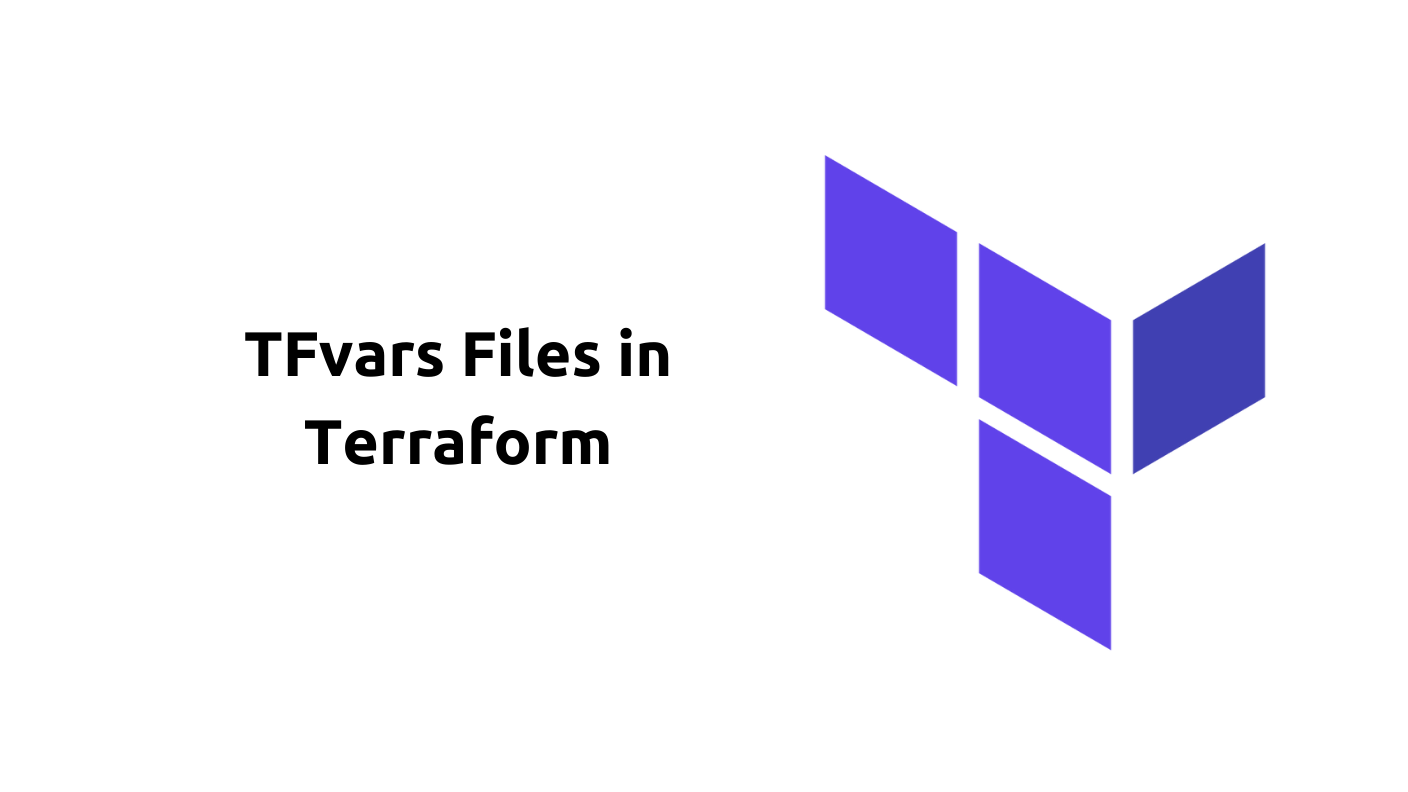TFvars Files in Terraform: A Comprehensive Guide
 Saurabh Adhau
Saurabh Adhau
Introduction
Terraform, with its declarative syntax, provides a powerful way to define infrastructure as code. One of the key components aiding this flexibility is the usage of TFvars files. In this guide, we'll unravel the concept of TFvars files, explore their purpose, and delve into a detailed example to understand how they enhance Terraform configurations.
1. Understanding TFvars Files:
TFvars files, short for Terraform variables files, are used to specify values for Terraform variables. These files enable users to provide input values to customize and parameterize their Terraform configurations. By separating variable values from the Terraform code, TFvars files enhance reusability, maintainability, and allow for easy collaboration across different environments.
2. Anatomy of a TFvars File:
A TFvars file typically has a simple structure. It consists of variable assignments where each variable is associated with a value. The file can be written in various formats, including HCL (HashiCorp Configuration Language) or JSON.
Let's take a look at an example TFvars file in HCL format:
# Example TFvars file
region = "us-west-2"
instance_type = "t2.micro"
ami_id = "ami-0c55b159cbfafe1f0"
environment = "production"
In this example, we are assigning values to variables such as region, instance_type, ami_id, and environment. These variables would be defined in the corresponding Terraform configuration files.
3. Using TFvars Files with Terraform Configuration:
To incorporate TFvars files into your Terraform configuration, you can follow these steps:
3.1. Define Variables in Terraform Configuration:
In your Terraform configuration (e.g., main.tf), declare the variables using the variable block. For example:
# Example Terraform configuration (main.tf)
variable "region" {}
variable "instance_type" {}
variable "ami_id" {}
variable "environment" {}
3.2. Reference Variables in the Configuration:
Utilize these variables in your Terraform resources or modules:
# Example Terraform configuration (main.tf continued)
provider "aws" {
region = var.region
}
resource "aws_instance" "example" {
ami = var.ami_id
instance_type = var.instance_type
tags = {
Name = "example-instance"
Environment = var.environment
}
}
3.3. Apply Configuration Using TFvars:
When applying your Terraform configuration, you can specify the TFvars file:
terraform apply -var-file=myvars.tfvars
Here, myvars.tfvars is the name of your TFvars file.
4. Best Practices for Using TFvars Files:
4.1. Consistent Naming:
- Adopt a consistent naming convention for your TFvars files to ensure clarity and ease of understanding.
4.2. Avoid Storing Sensitive Information:
- Refrain from storing sensitive information like passwords or API keys in TFvars files. Use more secure methods such as environment variables or key vaults.
4.3. Document Variables:
- Provide documentation for the variables used in your TFvars files to assist users in understanding their purpose and expected values.
5. Conclusion:
TFvars files in Terraform serve as a bridge between your configuration code and the specific values needed for different environments or use cases. By embracing TFvars, you enhance the flexibility and maintainability of your infrastructure code, enabling seamless deployments across diverse scenarios. As you embark on your Terraform journey, may the use of TFvars files be a key ally in orchestrating infrastructure with precision and ease. 🌐🛠️
Subscribe to my newsletter
Read articles from Saurabh Adhau directly inside your inbox. Subscribe to the newsletter, and don't miss out.
Written by

Saurabh Adhau
Saurabh Adhau
As a DevOps Engineer, I thrive in the cloud and command a vast arsenal of tools and technologies: ☁️ AWS and Azure Cloud: Where the sky is the limit, I ensure applications soar. 🔨 DevOps Toolbelt: Git, GitHub, GitLab – I master them all for smooth development workflows. 🧱 Infrastructure as Code: Terraform and Ansible sculpt infrastructure like a masterpiece. 🐳 Containerization: With Docker, I package applications for effortless deployment. 🚀 Orchestration: Kubernetes conducts my application symphonies. 🌐 Web Servers: Nginx and Apache, my trusted gatekeepers of the web.